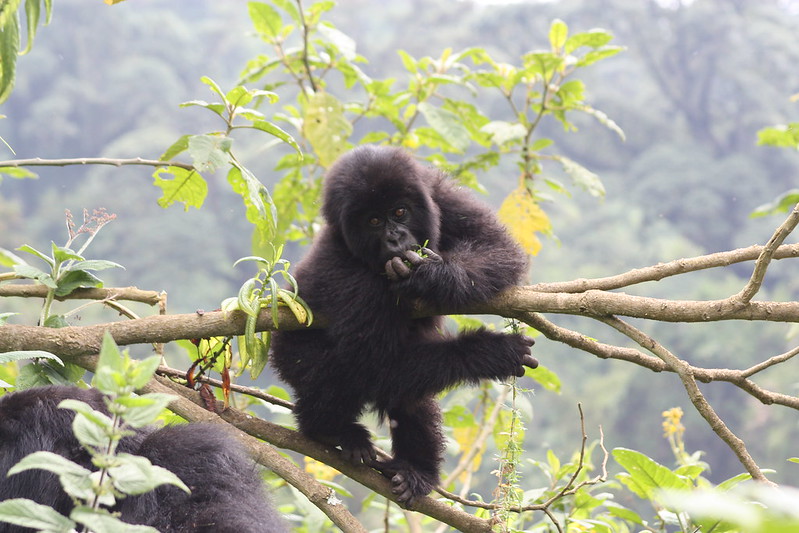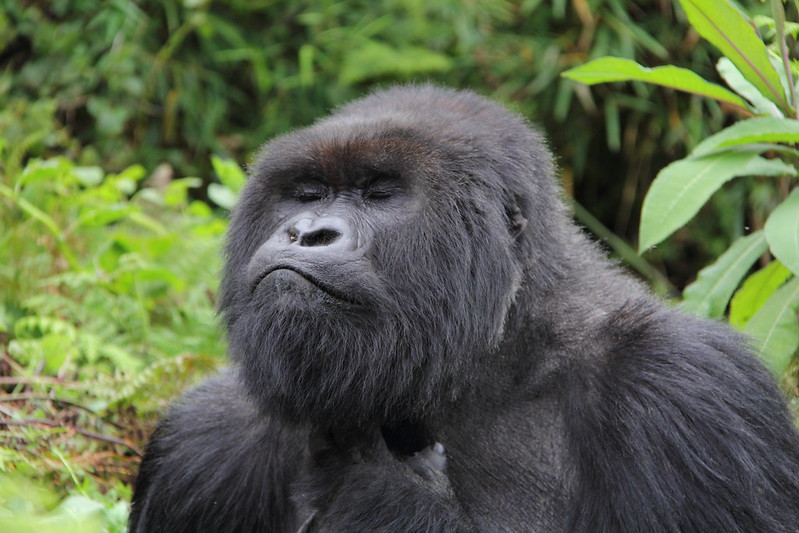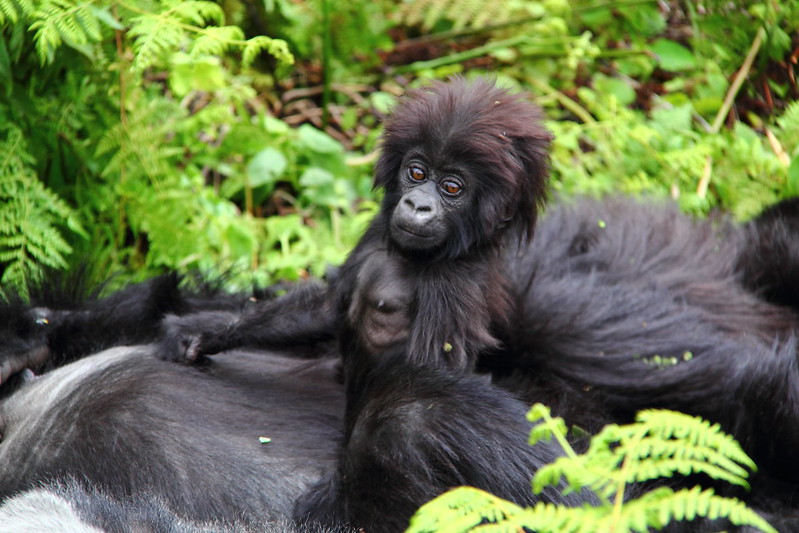Uganda Bwindi Gorilla trekking. The bwindi gorilla walk in Uganda is a once-in-a-lifetime opportunity to…
What is the Mountain Gorilla’s Biggest Threat?
What is the Mountain Gorilla’s Biggest Threat?
Mountain gorillas are one of the most endangered species on Earth. These majestic creatures, found only in the volcanic mountains of Central Africa, have long captivated the imagination of wildlife enthusiasts and researchers alike.
Despite efforts to protect them, mountain gorillas face numerous threats that endanger their survival. As one of the last remaining species of great apes, understanding the biggest threats to mountain gorillas is critical in ensuring their conservation.
In this article, we’ll dive into the various challenges that mountain gorillas face, highlight the most significant threats to their survival, and explore the ongoing conservation efforts to protect these incredible animals.
1. Habitat Loss and Fragmentation
One of the most significant threats to mountain gorillas is habitat loss. These gorillas are found in just two locations: the Virunga Volcanoes that span Uganda, Rwanda, and the Democratic Republic of Congo (DRC), and the Bwindi Impenetrable Forest in Uganda. These areas are home to only about 1,000 individuals, making their habitat incredibly important for their survival. However, the natural environment of the mountain gorilla is increasingly under threat from human activity.
1.1 Agricultural Expansion
As human populations grow in surrounding areas, more and more land is being cleared for agriculture. Farming practices like crop cultivation and livestock grazing encroach on the gorillas’ habitat, often leading to habitat fragmentation. Fragmented habitats are problematic because they isolate gorilla populations, making it harder for them to interact, find food, and mate. This isolation leads to a reduction in genetic diversity, which can make the gorilla population more vulnerable to disease and other threats.
1.2 Deforestation
Deforestation is a major issue for mountain gorillas as well. Trees provide shelter, food, and a safe environment for gorillas to thrive. However, logging, both legal and illegal, for timber and firewood, continues to threaten the gorillas’ home. Deforestation increases soil erosion and disrupts water flow, which in turn affects the ecosystem the gorillas rely on.
2. Poaching and Illegal Wildlife Trade
Although poaching of mountain gorillas is now rare, it remains a significant threat, particularly in areas where law enforcement is not as robust.
2.1 Poaching for Bushmeat
In the past, mountain gorillas were hunted for their meat, but today, the threat of poaching primarily comes from accidental snares set by poachers targeting other animals. While gorillas are not typically hunted for bushmeat anymore, they can still fall victim to these traps. The illegal wildlife trade also poses a risk, as young gorillas may be taken from the wild to be sold as exotic pets, though this is a rarer occurrence.
2.2 Conflict with Humans
In addition to poaching, there is a history of human-wildlife conflict in areas where gorillas share territory with humans. When human populations expand into gorilla habitats, crops can be destroyed, and livestock may be attacked by gorillas in search of food. Such encounters can escalate into violence, and gorillas can be killed in retaliation. Moreover, gorillas may inadvertently damage crops or pose a danger to farmers, increasing the likelihood of conflicts.
3. Disease Transmission
One of the most insidious threats to mountain gorillas is the transmission of diseases, especially from humans. Gorillas are genetically very similar to humans, sharing approximately 98% of our DNA. This similarity makes them highly susceptible to human diseases, some of which can be deadly for gorillas.
3.1 Human Disease
Gorillas can contract diseases like respiratory infections, influenza, common colds, and tuberculosis from humans who come into contact with them. In the past, outbreaks of respiratory illnesses have led to significant losses within mountain gorilla populations. This is particularly concerning because gorillas live in tight-knit social groups, and a single infected individual can potentially spread the disease to the entire group.
3.2 Tourism-related Disease Spread
As eco-tourism has grown in popularity, so has the potential for disease transmission. Tourists visiting gorilla trekking sites are required to follow strict health protocols, such as wearing face masks, sanitizing hands, and keeping a safe distance from the animals. However, there have been instances where disease transmission has occurred, putting gorillas at risk. Continued education and enforcement of these guidelines are crucial in protecting gorillas from human-borne diseases.
![]()
4. Climate Change
Climate change is an emerging threat to mountain gorillas, though its full impact is still not entirely understood. The shifting climate is already having observable effects on ecosystems around the world, and the high-altitude forests where mountain gorillas live are no exception.
4.1 Changes in Food Availability
Mountain gorillas rely on a wide range of plants, fruits, and other natural resources for food. However, changes in temperature and precipitation patterns can disrupt the availability of these resources. Droughts, altered rainfall patterns, and temperature shifts can affect the growth and distribution of the plants that gorillas depend on, potentially leading to food scarcity.
4.2 Habitat Alteration
Changes in temperature can also result in the shift of species ranges, with some plant and animal species moving to higher elevations in search of cooler climates. This can displace gorillas from their native habitats or force them to compete with other species for limited resources. As the climate continues to warm, the areas where mountain gorillas live may become increasingly inhospitable, forcing them to adapt or face further population decline.
5. Limited Genetic Diversity
Mountain gorillas have a very small population size, which leads to a problem known as genetic bottlenecking. When a species undergoes a sharp reduction in population size, it can result in the loss of genetic diversity. This poses a significant risk for the long-term survival of the species, as it can make them more susceptible to diseases and environmental changes.
5.1 Inbreeding
With such a small population, the risk of inbreeding becomes a concern. Inbreeding can lead to genetic defects, reduced fertility, and lower survival rates for offspring. Although conservation efforts have helped mountain gorillas begin to recover, their small population size means they remain vulnerable to these issues.
5.2 Conservation Bottlenecks
Efforts to conserve mountain gorillas have been highly successful in increasing their population in recent years, but the small size of their remaining habitat and population means that they still face long-term risks associated with genetic inbreeding. More efforts are needed to increase habitat connectivity, allowing gorilla groups to mix and breed without the risks of inbreeding.
6. Conservation Efforts
Despite the numerous threats facing mountain gorillas, there have been substantial conservation efforts that have contributed to the species’ recovery. Mountain gorilla populations have more than doubled over the last 30 years, thanks to conservation initiatives led by organizations such as The Dian Fossey Gorilla Fund, Wildlife Conservation Society (WCS), The Virunga Foundation, and The Rwanda Development Board (RDB).
6.1 Anti-Poaching Measures
Many organizations have focused on reducing poaching through community education and engagement, stronger law enforcement, and the establishment of protected areas like Virunga National Park, Bwindi Impenetrable Forest, and Rwanda’s Volcanoes National Park. These areas are carefully monitored, and anti-poaching patrols are regularly conducted to safeguard the gorillas from harm.
6.2 Eco-Tourism Regulation
Eco-tourism is an essential source of funding for mountain gorilla conservation, but it must be done responsibly. Trekking permits are highly regulated, ensuring that the number of visitors is limited to reduce human impact on the gorillas’ habitat. Tourists are also educated on the importance of maintaining a safe distance from the gorillas to reduce the risk of disease transmission.
6.3 Habitat Restoration and Expansion
Efforts to protect and restore gorilla habitats have been ongoing. The creation of wildlife corridors, which link fragmented habitats, allows gorillas to move more freely and safely between areas. Additionally, tree planting and reforestation programs help mitigate the effects of deforestation and restore gorilla habitats.
The biggest threat to mountain gorillas is multifaceted and includes habitat loss, disease transmission, poaching, and climate change. These threats are compounded by their small population size and limited genetic diversity. However, conservation efforts over the past few decades have made significant strides in safeguarding these incredible creatures, and their populations are slowly recovering.
Protecting mountain gorillas requires ongoing commitment from governments, conservation organizations, and local communities. Through continued conservation efforts, stricter regulations on eco-tourism, and habitat restoration projects, we can help secure a future for mountain gorillas and ensure that these magnificent animals continue to thrive for generations to come.


